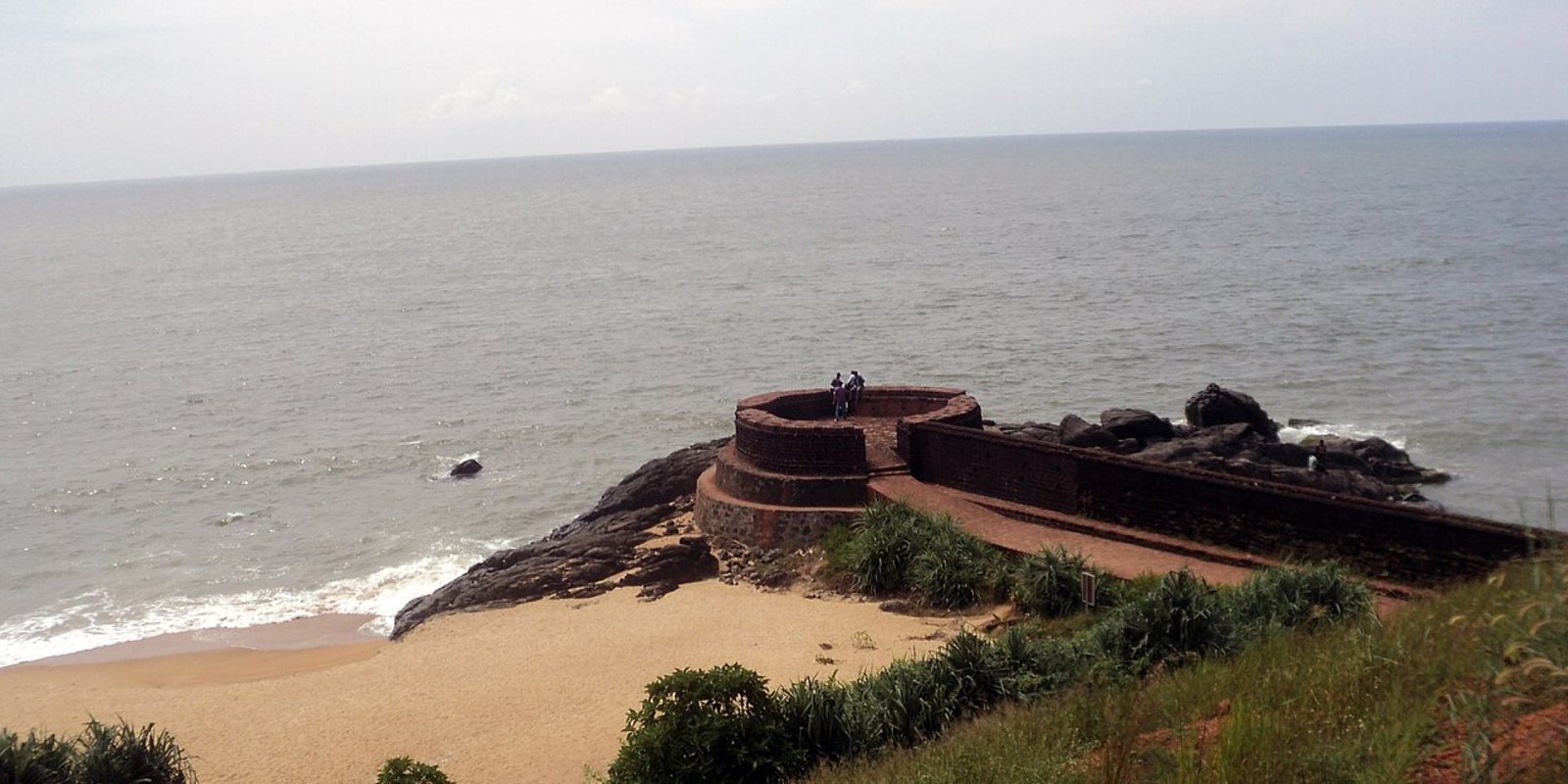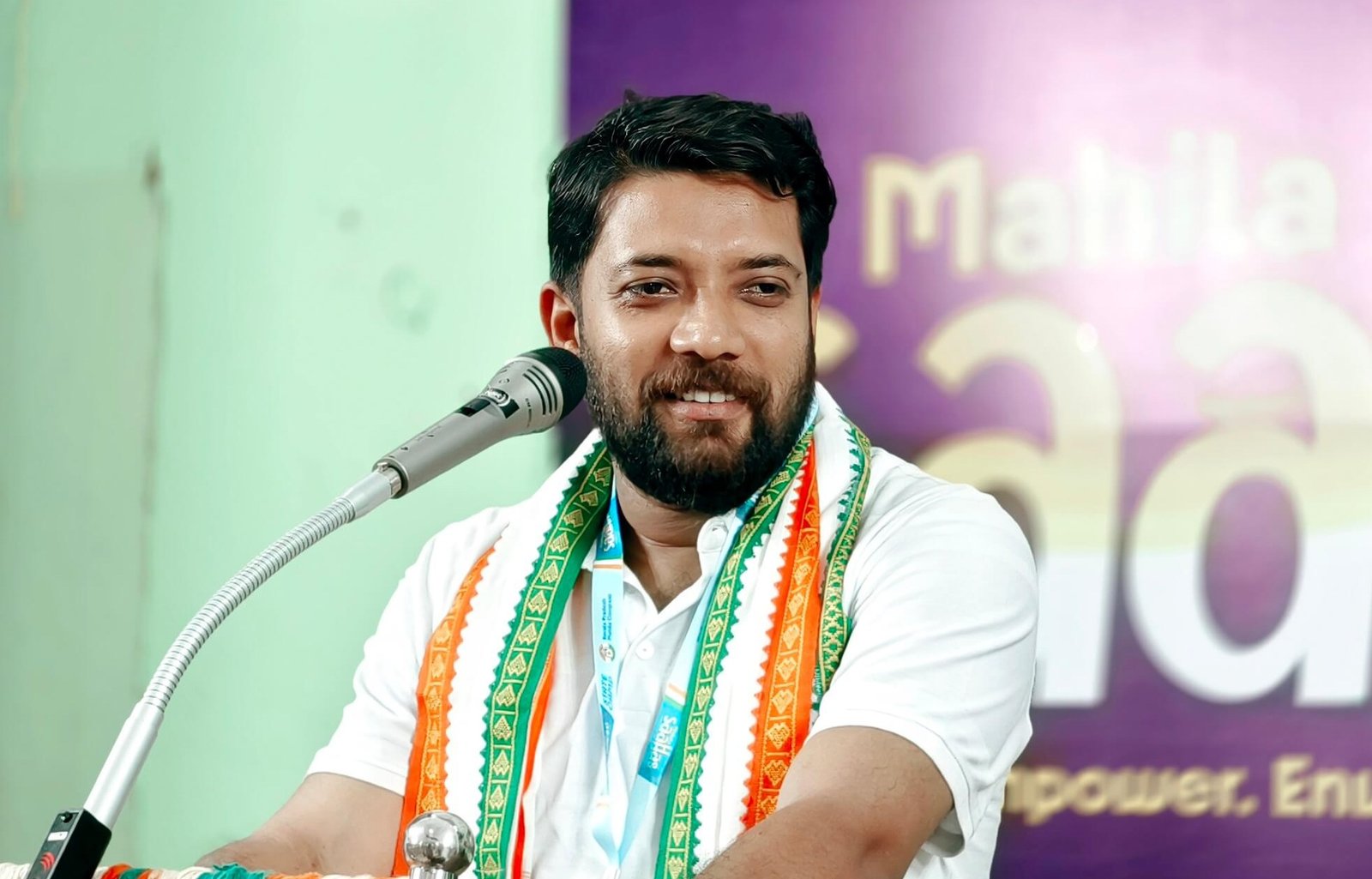Bekal Fort, located in northern Kerala, is an architectural marvel and a crucial historical landmark. This enormous fort, covering over 40 acres, offers visitors an exceptional glimpse into Kerala’s rich past. Situated by the serene Bekal Fort Beach, it provides a blend of history, natural beauty, and scenic coastal views, making it a popular destination for tourists. The fort’s massive walls, sprawling grounds, and strategic location on the Arabian Sea have earned it a reputation as one of Kerala’s largest and most well-preserved forts. It’s a perfect spot for history enthusiasts, nature lovers, and anyone seeking a peaceful retreat by the sea.
With its construction dating back to the 16th century, Bekal Fort has witnessed several significant historical events, including invasions, military conflicts, and colonial rule. Despite its age, the fort remains in remarkable condition, with its defensive features like bastions, observation towers, and water tanks intact. The fort’s prime location offers panoramic coastline views, including Bekal Beach, which adds to its appeal. Whether walking along its ancient walls, exploring the tranquil surroundings, or simply soaking in the scenic beauty, Bekal Fort promises a unique and memorable experience for all who visit.
Discover the Majestic Bekal Fort: History, Attractions, and More in 2025
| Category | Details |
|---|---|
| Country | India |
| State | Kerala |
| District | Kasargod |
| Location | Near Bekal Beach, Kasargod District, Kerala |
| Timings | 8:00 AM to 6:00 PM (Every day) |
| Entry Fee | ₹25 per person for adults, free for children under 15 |
| How to Reach (By Train) | – Bekal Fort Railway Station (1.7 km) – Kanhangad Railway Station (12 km) – Kotikulam Railway Station (14 km) |
| How to Reach (By Air) | – Mangalore International Airport (71 km) – Kannur International Airport (101 km) – Calicut International Airport (195 km) |
| Nearby Attractions | – Bekal Beach – Kappil Beach – Hosdurg Beach – Chandragiri Fort – Nityanandashram Caves – Bekal Aquatics – The Lotus Houseboat |
| Facilities | Parking, Guide Services (optional), Cleanliness Maintenance |
| Best Time to Visit | October to March (Post-monsoon and winter months for pleasant weather) |
| Weather | Tropical climate with temperatures ranging from 25°C to 35°C; Monsoon from June to September. |
| Additional Info | The fort is well-maintained, and the view from the fort’s observation tower is one of the main highlights. |
A Look at Bekal Fort’s Structure and Design
Bekal Fort is one of Kerala’s most impressive forts, with its grand architecture and strategic design. The fort is built on a small headland, and almost three-quarters of its outer walls touch the sea, giving it the appearance of rising directly from the water. Despite its imposing structure, Bekal Fort was not designed to serve as an administrative center, nor does it have any royal mansions or palaces. Instead, its primary purpose was military defense, protecting the region from naval and land-based attacks, which was essential during its construction.
The fort’s design is a fine example of military architecture, with its thick walls and intricate layout. The massive ramparts, built using local laterite stone, form a nearly circular structure that encloses the entire fort. Four main bastions are strategically placed at each corner to provide maximum defense and ensure the fort can withstand attacks from multiple directions. The fort’s observation tower on the eastern side stands tall and offers spectacular views of the surrounding coastline and the Arabian Sea. This vantage point would have been essential for spotting enemy ships approaching from the sea. Once filled with water, the fort also features a deep moat to create an additional barrier for invaders.
Inside the fort, various features reflect its military purpose, such as the magazine for storing ammunition and a water tank used to supply the fort’s needs during sieges. The fort’s strategic position on a hilltop ensures a commanding view of the surrounding landscape, including the tranquil Bekal Beach, making it an ideal spot for defense and observation. Today, while the fort no longer serves its original military purpose, its remarkable design and historical significance continue to captivate visitors worldwide.

History of Bekal Fort: From the Perumal Age to British Control
Perumal Age (8th–12th Century):
Bekal Fort’s history traces back to the early Perumal Age, during which the region was part of Mahodayapuram, the kingdom of the Perumals. The fort was initially a minor military structure strategically located to safeguard the area. The Kolathiri rulers, who ruled this part of Kerala during the 12th Century, played a pivotal role in its prominence. They recognized the location’s strategic importance, given its coastal position, and began fortifying the area. The fort symbolized regional authority, though its role was still relatively limited. Its historical significance, however, started to grow as the Kolathiri kings ruled over the northernmost parts of Kerala and had to safeguard the territory from external threats, including pirates and invaders from the west coast.
Nayakas’ Influence (16th Century):
The Nayakas, originally military governors under the Vijayanagara Empire, became key players in the development of Bekal Fort. Around 1650 AD, under the leadership of Shivappa Nayaka of Keladi, the fort was significantly fortified and expanded. The Nayakas’ rule marked a transformative period for Bekal Fort. They constructed a more formidable structure, improving the walls and defense mechanisms and adding essential military features like water tanks and watchtowers.
Shivappa Nayaka, a notable military leader, recognized the fort’s strategic significance due to its location along the Arabian Sea. The fort became a stronghold for the Nayakas to protect the region from potential threats. During this time, Bekal was a military site and a symbol of the Nayakas’ growing Influence in the region, mainly as they took control of the coastal area, which was historically vulnerable to invasions.
The design of Bekal Fort during this period is a testament to military foresight. Its large observation tower and strategically placed artillery positions were intended to protect the area from land-based and naval attacks, making it an important military outpost for the Nayakas.
Mysorean Era (Late 18th Century):
By the late 18th Century, the region was absorbed into the growing power of the Mysore Kingdom under the rule of Hyder Ali and his son, Tipu Sultan. Hyder Ali took control of much of southern India, including the northern parts of Kerala, and sought to strengthen his defenses in coastal areas to fend off British expansion. Bekal Fort, already well-fortified under the Nayakas, became an important military stronghold.
Tipu Sultan, known for his strategic military prowess, recognized the fort’s defensive capabilities and further enhanced its fortifications. The fort was a key location for Tipu’s military campaigns, mainly as he focused on resisting British colonial expansion. The Mysorean era was marked by intensified military conflicts between the British and Tipu Sultan’s forces, and Bekal Fort became one of the key forts in the defense network. It was used to house soldiers and store provisions and weaponry, playing a vital role in Tipu Sultan’s resistance to British control.
During this period, the fort’s strategic positioning along the coastline allowed Tipu Sultan to monitor British naval movements, as the sea route was a vital part of British trade and military strategies. Tipu Sultan also used the fort’s observation tower to oversee the surrounding region and plan his military operations effectively.
British Control (1799 Onwards):
The British defeat of Tipu Sultan in 1799 marked the beginning of British control over Bekal Fort. Following the fall of Tipu Sultan, the British East India Company took control of the fort and incorporated it into the South Canara District, solidifying their hold over the region. However, the fort never served the same military purpose under British rule as in previous centuries.
During the British era, Bekal Fort gradually lost its strategic importance, as the British had already established more substantial military centers in nearby regions like Mangalore and Malabar. The fort remained a symbol of British dominance, though its use was less about defense and more about administrative control. Despite shifting power, the British maintained the fort as part of their network of forts in southern India.
Over time, the fort fell into disuse, and its condition deteriorated, though it still retained its place as a historical landmark. The British left a legacy of Influence on the fort’s management, which, after India’s independence, was preserved as part of Kerala’s historical heritage.

What Makes Bekal Fort Stand Out?
Bekal Fort is unique due to its coastal location, expansive structure, and historical significance. Unlike other forts, which may have been built primarily for defense, Bekal’s design reflects the region’s strategic maritime importance. The fort’s solid construction resembles the Thalassery Fort and St. Angelo Fort in Kannur, which the Dutch built.
Exploring Bekal Fort’s Surroundings: Nearby Attractions
While Bekal Fort is a must-visit, the surrounding areas also offer plenty of tourist attractions. There’s no shortage of things to explore, from ancient temples to peaceful villages.
1) Bekal Beach: A Serene Coastal Escape
Bekal Beach is undoubtedly one of the most popular attractions near Bekal Fort. The beach offers a stunning view of the Arabian Sea, with golden sands stretching along the coastline. From the vantage point of Bekal Fort, visitors are treated to an incredible panoramic view of the waves crashing onto the shore, making it a perfect spot for photography. The well-maintained beach provides a tranquil environment for visitors to relax, take a leisurely walk, or enjoy the refreshing sea breeze. The view from the fort, especially during sunset, is nothing short of mesmerizing.
2) Kappil Beach: A Peaceful Sunset Spot
Located just a short drive from Bekal Fort, Kappil Beach offers a quieter, less crowded experience than Bekal Beach. This small, charming beach is the ideal place to sit back and enjoy the beauty of the coastline while watching the sunset. The tides at Kappil Beach can be rough, making it unsuitable for swimming, but it is still a fantastic location for unwinding and enjoying the serene surroundings. The peaceful atmosphere and scenic views make it a great place to reflect and relax.
3) Hosdurg Beach: A Hidden Gem
Hosdurg Beach, located near Bekal Fort, is a hidden gem in the region, offering a peaceful alternative to the more popular beaches. While not as well-known as Bekal Beach, it has a unique charm with its calm surroundings and pristine sands. Visitors can enjoy the solitude of the beach, away from the crowds, making it perfect for quiet strolls or just soaking in the area’s beauty. The beach offers a chance to experience the coastline’s natural beauty without the typical hustle and bustle.
4) Chandragiri Fort: A Historic Landmark with Scenic Views
Chandragiri Fort, located about a short drive from Bekal Fort, is another historical landmark worth visiting. Though neglected and less frequented by tourists, the fort still holds historical significance. The fort is perched on a hill overlooking the confluence of the Payaswini River and the Arabian Sea, offering stunning views of the surrounding area. Visitors can explore the fort’s ruins and enjoy a peaceful walk along its perimeter while soaking in the scenic beauty. It’s a great spot for history enthusiasts to learn more about the region’s past.
5) Nityanandashram Caves: A Spiritual Retreat
For those seeking a peaceful and spiritual experience, Nityanandashram Caves is a must-visit attraction near Bekal Fort. Situated in a quiet area, the ashram features a temple below a natural cave formation, offering a tranquil setting for meditation and reflection. The calm atmosphere of the caves makes it an ideal location for visitors looking to escape the noise of daily life and find peace. Nityanandashram is an excellent spot for those seeking spiritual solace amid nature.
6) Bekal Aquatics: An Adventure on Water
If you’re looking for excitement and adventure near Bekal Fort, Bekal Aquatics is the place to be. Located close to the fort, Bekal Aquatics offers a wide range of water sports and activities, including speed boating, jet skiing, banana rides, kayaking, and surfing. This is an excellent spot for thrill-seekers looking to enjoy the beautiful coastal waters of Kerala. The well-maintained facilities and professional staff ensure a safe and enjoyable experience for visitors of all ages. Bekal Aquatics offers something fun whether you’re an experienced water sports enthusiast or a first-timer.
7) The Lotus Houseboat: A Glimpse into Rural Life on Kerala’s Backwaters
The Lotus Houseboat offers a unique opportunity to explore the backwaters of Northern Kerala in a traditional houseboat. A short distance from Bekal Fort, this houseboat cruise takes visitors on a leisurely journey through the lush, green landscapes of the region. Gliding along the tranquil waters, you can witness the rhythms of rural life, with views of quaint villages, paddy fields, and local wildlife. The houseboat offers comfortable seating, and the sundeck is perfect for enjoying the sights and sounds of the backwaters. This relaxing and picturesque experience is an excellent way to discover another side of Kerala while remaining close to Bekal Fort.
Practical Information for Visitors
Bekal Fort Timings and Entry Fee
- Timings: 8 AM to 6 PM (Every day)
- Entry Fee: ₹25 per person for adults, free for children under 15.
How to Reach Bekal Fort
- By Train: The nearest railway stations are Bekal Fort Railway Station, Kanhangad Railway Station, and Kotikulam Railway Station.
- By Air: The nearest airports are Mangalore International Airport (71 km), Kannur International Airport (101 km), and Calicut International Airport (195 km).
Weather and Temperature in Bekal
Bekal has a tropical climate, with temperatures typically ranging from 25°C to 35°C, making it a pleasant destination year-round. However, the monsoon season from June to September brings heavy rains, so it’s best to plan your visit during the cooler months from October to March.
Accommodations Near Bekal Fort
Plenty of hotels, resorts, and homestays offer comfortable accommodations for visitors planning to stay close to Bekal Fort. Whether you prefer a luxury resort or a cozy homestay, options near Bekal are plenty.
Top Places to Stay:
- Halifax Inn
- Taj Bekal Resort & Spa, Kerala
- Bekal Fort Resorts
- BEKAL VILLAGE HOMESTAY
- Gateway Bekal
- Deira City Residency
Frequently Asked Questions (FAQs)
1. What are the Timings of Bekal Fort?
Bekal Fort is open to the public every day from 8 AM to 6 PM. It’s best to visit in the early morning or late afternoon to avoid the midday heat and to enjoy the fort’s scenic beauty with fewer crowds. The fort is accessible year-round, so it’s an ideal destination for weekend trips and extended holidays.
2. Who Built Bekal Fort?
Bekal Fort was constructed by Shivappa Nayaka, a ruler of the Keladi Nayaka dynasty, in 1650 AD. Initially, it was a strategic military stronghold built to protect the region from invaders. Over time, the fort became a symbol of the Nayakas’ power and influence in the northern Kerala region.
3. What Do Visitors Think About Bekal Fort?
Visitors frequently commend Bekal Fort’s stunning blend of history, architecture, and natural surroundings. Reviews often highlight the fort’s well-preserved structure and picturesque setting overlooking the Arabian Sea. Tourists are also captivated by the panoramic views from the fort’s observation tower, making it a favorite for photographers. Overall, it’s considered a must-visit spot for history buffs and those seeking peace by the sea.
4. How Much Is the Entry Fee for Bekal Fort?
The entry fee to Bekal Fort is quite affordable. The ticket price for adults is ₹25, while children under 15 can enter for free. This makes it a budget-friendly attraction for families and solo travelers alike. The minimal entry fee contributes to maintaining the fort and its surrounding areas.
5. Where Is Bekal Fort Located?
Bekal Fort is located in Kasargod District, the northernmost part of Kerala. It sits just 3 km from Bekal Beach and is easily accessible by road, making it a convenient stop for tourists exploring the region. The fort’s proximity to coastal beauty makes it a unique blend of history and nature, perfect for sightseeing and relaxation.
6. What Makes Bekal Fort Famous?
Bekal Fort is famous for its architectural brilliance and historical significance. It is one of the largest and best-preserved forts in Kerala. The fort’s coastal location offers spectacular views of the Arabian Sea, making it an ideal spot for photography and relaxation. It is also renowned for its strategic position, which was designed to safeguard the area from invasions. Its large observation tower, water tank, and unique layout add to its historical charm.
7. How Can I Reach Bekal Fort?
Bekal Fort is easily reachable by various modes of transport. The nearest railway station is Bekal Fort Railway Station, about 2 km away. The town of Kanhangad, around 12 km from the fort, also serves as a major railway hub. If you’re traveling by air, the nearest airport is Mangalore International Airport, about 71 km from Bekal. Taxis or buses are available to take you directly to the fort from the train station or airport.
8. Where Exactly Is Bekal?
Bekal is situated in the northernmost part of Kerala, close to the Karnataka border. The area has a tranquil vibe, with a mix of coastal beauty and historical significance. It’s a relatively quiet region compared to other parts of Kerala, making it ideal for visitors looking to escape the crowds and immerse themselves in nature and history. The fort lies about 2 km from Bekal Beach, adding to its charm.
9. What Food Can I Expect in Bekal?
Bekal is known for its authentic Kerala cuisine, which focuses on fresh seafood and traditional vegetarian dishes. Visitors can enjoy local favorites such as Kerala Sadya (a conventional vegetarian feast), fish curry, appam (rice pancake), and puttu (steamed rice cake). Several restaurants and local eateries near Bekal Fort offer these mouth-watering dishes, giving you a chance to savor the unique flavors of Kerala.
10. How Far Is Bekal Fort from Mangalore?
Bekal Fort is located approximately 71 km from Mangalore, around a 1.5-hour drive by road. Mangalore, the nearest major city, is well-connected to Bekal by regular buses and taxis. Mangalore also serves as a gateway for visitors traveling from different parts of India and abroad. Whether traveling by bus, train, or car, the journey to Bekal from Mangalore is scenic and enjoyable.
11. Is Bekal Fort Suitable for Family Visits?
Absolutely! Bekal Fort is a great place for family outings. The fort’s spacious grounds are perfect for leisurely walks, and the surrounding coastal scenery provides a calm and relaxing atmosphere. The fort historical significancefort’s historical significance also makes it educational, so children can learn about Kerala’s rich history while enjoying a day outdoors. The fort is safe for all ages and has ample space for kids to explore and enjoy.
12. Can I Visit Bekal Fort During the Monsoon Season?
While Bekal Fort is open year-round, it’s important to note that the monsoon season (June to September) brings heavy rainfall, which can make the experience less enjoyable due to slippery paths and limited outdoor activities. If you enjoy the lush greenery and dramatic clouds, you may still visit during this period, but it’s advisable to come prepared for rain and take extra precautions while exploring the fort’s grounds.
13. Are There Any Nearby Beaches to Visit?
Yes, Bekal Fort is located near the beautiful Bekal Beach, which is a perfect place to relax and unwind after exploring the fort. The beach offers golden sands, a peaceful atmosphere, and the chance to swim in the gentle waves. Other nearby beaches worth visiting include Kappil Beach (around 6 km away) and Kasargod Beach (about 14 km away), known for their serene settings and scenic beauty.
Why Visit Bekal Fort in 2025?
Bekal Fort is a treasure trove of history, culture, and natural beauty. Whether you’re a history enthusiast, a photography lover, or just seeking a peaceful getaway by the beach, Bekal Fort offers something for everyone. Its picturesque location, fascinating history, and strategic architecture make it one of the top destinations to explore in Kerala.
For anyone visiting the region, Bekal Fort is undoubtedly a must-see, offering an unforgettable experience for travelers of all types.






